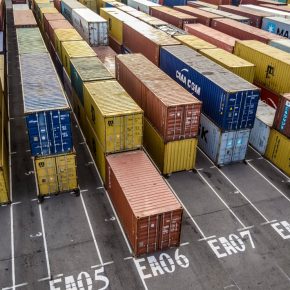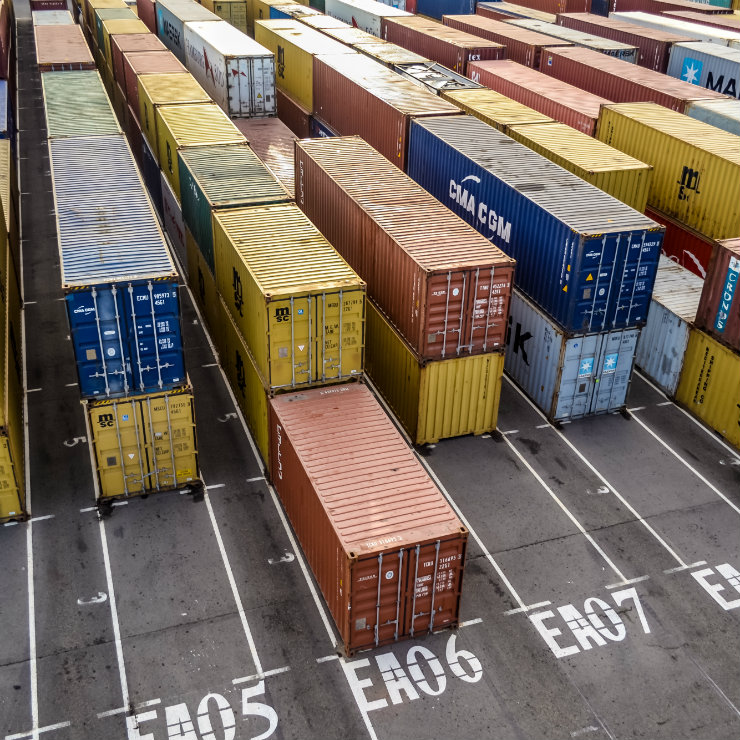Tydzień w gospodarce
Category: Raporty

(Tristan Taussac, CC BY-ND)
At the beginning of January 2018, Bank Gospodarstwa Krajowego (BGK-Poland’s state development bank) signed an agreement regarding letters of credit with five commercial banks. As a result these banks will be able to confirm the letters of credit directly to their clients, while BGK will assume the foreign bank’s risk resulting from the letters.
Such a possibility is already available in Alior Bank, Citi Handlowy, Credit Agricole, Bank Pekao and Raiffeisen Polbank. BKG is also holding talks with three additional banks.
The letter of credit is the safest but also the most expensive type of contract used in exports. It is a written obligation of the buyer’s (importer’s) bank to pay to the indicated seller (exporter) a specified amount of money, at an agreed date and in accordance with the terms of the letter of credit. It is used in cases where ordinary loans from BGK-often subjected to mandatory insurance at the Export Credit Insurance Corporation (KUKE)-are no longer sufficient.
Naturally, risky high-value contracts for under-researched markets in Africa or Latin America are not a mass product. Entrepreneurs can apply to BGK with a contract of a little over EUR1m. This is the minimum funding in respect to a loan granted through the bank of the buyer of goods supplied by a Polish producer. The cost of financing depends on BGK’s assessment of the importer’s bank, and the minimum repayment period is two years.
A classic loan for the financing of foreign expansion must amount to at least EUR8m. Both the repayment period and costs depend on individual negotiations, because this instrument is designed as long-term investment financing based on the balance sheet of the Polish or foreign entity.
BGK also offers loans to foreign buyers of Polish goods and services in the amount of at least EUR10m. In this case the financing structure can be more sophisticated. The types of financing include project finance, finance based on importer’s balance sheet, sovereign finance, or joint venture finance.
In total, thanks to the numerous programs, BGK increased its exposure to exports from EUR431.4m in 2016 to over EUR719m (data for 11 months of 2017). The bank benefits from the fact that it has a credit rating equal to Poland’s rating and access to cheap finance. It can therefore enter into niches that would not be profitable for commercial banks.
However, there is still the problem of companies with export projects smaller than a few million euros, where the involvement of a development bank would make no economic sense. Where can they look for financing, or how can they start their cooperation with a bank at all?
“It sometimes amazes me how few companies use simple instruments such as hedging of exchange rate risk at their banks. Assuming that the terms are good, this could cost only as much as the spread on the exchange transactions between, for example, the PLN and the EUR. Meanwhile, the entrepreneur knows, how much he/she will get for the export revenues,” says Tomasz Kaczor, the chief economist at BGK.
The general trend is the following: the smaller the company, the more likely it is to use only its own resources. Such companies first launch their exports to the countries of the European Union, and only after acquiring experience they start considering more remote directions and sources of external financing.
Own financing was also used by the small company Szumisie, a producer of cuddly toys emitting white noise which helps children fall asleep. In the last year’s edition of the “Polish Company – International Champion” competition, this small enterprise was awarded, alongside much larger companies listed on the stock exchange, such as KGHM, Selvita and Wielton.
“Our product fairly quickly started to sell well in Poland, so we found people who organized the distribution network in Germany, France and other countries. We went to international toy trade fairs and that was where additional distributors came to us. In the case of goods sold online, exports are relatively easy,” says Anna Skórzyńska, the company’s owner. “We managed to increase production using our own resources. If we ever think about markets with even greater absorptive capacity, then I imagine that our own savings may not be enough and some financial instruments for exporters will be necessary,” she adds.
The problem is that when a company is selling more complex products in traditional outlets in the European Union, the established local companies often have complete control of the market. Due to the over regulation and saturation of western markets, sometimes the only way for Polish companies to compete is to take over a foreign competitor.
And financing of such activities can be found in the broadly understood export support system. It is worth taking a look, for example, at the offer presented by PFR TFI and its Foreign Expansion Fund.
Last year the Fund commissioned a study of 381 companies listed on the Warsaw Stock Exchange and some other companies. Although the sample is not a representative one, but it says something about Polish medium-sized enterprises.
Almost half of them (47.1 per cent) are planning FDI over the course of the upcoming two years, and for two-thirds of these companies this won’t be the first investment planned abroad. However, over half of the surveyed enterprises are not planning such activities.
As much as 83.7 per cent of the surveyed enterprises that plan to carry out foreign expansion indicated the intention of taking over a foreign company, while 16.3 per cent will invest in the further expansion of an already owned company. None of the respondents intended to establish a new company from scratch in a foreign market.
The survey for PFR TFI indicates that typical foreign investment projects fall in the range of EUR9.6-96m, and the most attractive way of implementing them is through the equity financing of a foreign company with an option to acquire shares.
The Foreign Expansion Fund itself, which has been operating in this model for two years, has analyzed 50 applications and concluded almost 10 contracts. It cannot announce them for legal reasons, but the companies concluding the contracts can do that at their own discretion. In 2017, such transactions were carried out by OT Logistics in Croatia, Elemental Holding in Lithuania and the Polcom Group in Edinburgh.
These are investments worth from several to over a dozen million euros concluded for a period from five to seven years. Considering that the contractual limit of BGK’s total involvement in the Foreign Expansion Fund (BGK assumes the fund’s certificates) is EUR359m, many more such projects could still be pursued.
The potential exporters may also seek their opportunity in EU funds, but in this case the formal requirements are quite substantial. First of all, they have to adapt the areas of the company’s operations according to the Polish Classification of Activities to those that the Polish state intends to support.
A large part of the EU funds is managed by the Polish Investment and Trade Agency (PAIH) and its website contains a list of 12 industries for which broader promotional programs have been provided:
The agency also selected five prospective markets where promotion programs will be implemented over the next three years. These are Algeria, India, Iran, Mexico and Vietnam.
Even though the Polish Investment and Trade Agency (PAIH) claims that both lists have been carefully prepared (two research institutes took into consideration many factors, including the National Smart Specializations and the opinions of the entrepreneurs themselves, after which a matrix was created, based on which these 12 industries were selected), the list probably isn’t closed. We can expect that, along with economic development, export opportunities will emerge even in those sectors that remain in the shadows right now.
“The base scenario is that Polish exports will continue to grow in the coming years as well, unless there is a global recession, which always hits international trade. Structurally speaking, we are still a small, open economy, i.e. according to the definition we do not set the global prices in the markets, but we have large production capacities even at the prices determined by others. In such economies the share of exports is generally higher than in others. The results achieved by Poland so far are the best proof of that,” concludes Tomasz Kaczor.



